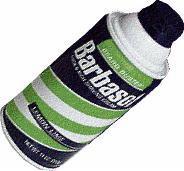Keisha Brown, Gleaner Writer
The medical term for persistent inflammation of the skin caused by shaving is Pseudofolliculitis barbae. The colloquial term is razor bumps, and it is most common on the male face. Razor bumps can, however, occur on other parts of the body where hair is shaved or plucked, especially areas where hair is curly and the skin is sensitive, such as the genitals.
What's going on
After a hair has been shaved, it begins to grow back. Curly hair tends to curl into the skin instead of straight out the follicle. Razor bumps can make the skin look itchy and red, and in some cases, it can even look like pimples. These inflamed papules or pustules can form, especially if the area becomes infected. This is a real problem for black men and other people with curly hair. If left untreated over time, this can cause keloid scarring in the beard area.
What you should do
✔ Take a hot shower before shaving. This will soften the hairs and open the pores.
✔ Use a thick shaving gel.
✔ Don't stretch the skin when shaving, and always shave in the direction your beard grows. Use the fewest razor strokes possible. Rinse with cold water.
✔ Use an electric razor if it can be adjusted to a higher setting.
✔ Use a moisturising lotion after shaving.
Some men may use shaving powders to avoid the irritation. It is also a good idea to use a razor with a single blade or special wire - wrapped blade to avoid shaving too closely. In occupations where shaving is a requirement, such as the military, some men may get electrolysis, laser hair removal, or use exfoliating products to minimise the inflammation.
I've got razor bumps. Now what?
Shaving every other day, rather than daily, will reduce razor bumps. If you must use a blade, soften the beard first with a hot, wet washcloth for five minutes. Medications can be prescribed to speed healing of the skin. Glycolic acid lotion eight per cent, prescription antibiotic gels, eg. Benzamycin, or oral antibiotics can be used. Retin-A is a potent treatment that helps to even out any scarring within a few months. It is used nightly and applied to the beard skin while the beard is growing out. Sun exposure should be minimised when using this product and it is important to use a sunscreen during the day as the risk of sunburn is increased.
Existing razor bumps can often be treated by removal of the ingrown hair. Extrafollicular hairs (hairs that have exited the follicle and re-entered the skin) can usually be pulled from under the skin, or removed entirely with tweezers. Severe problems may require removal by a dermatologist.
Sources: www.webmd.com, www.about.com, Photo credits: Monarch Pharmacy, Sovereign Centre.

